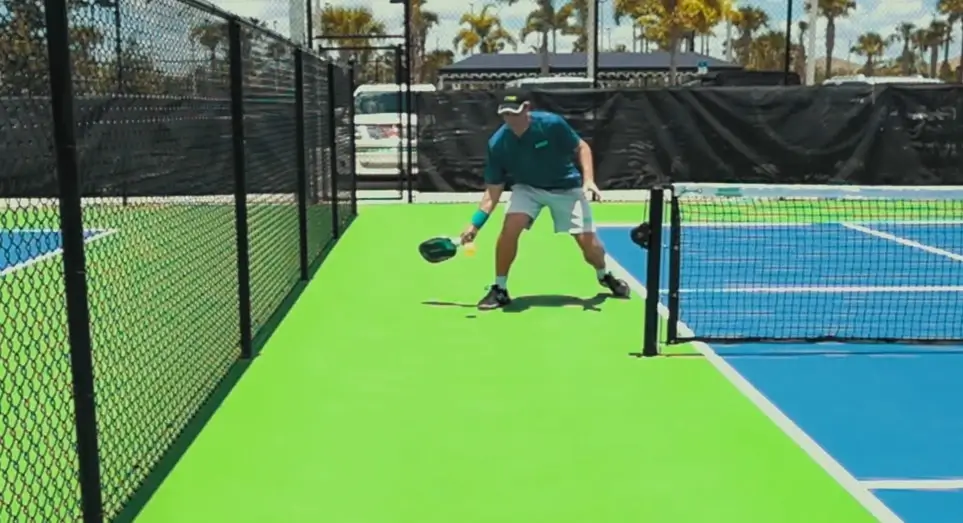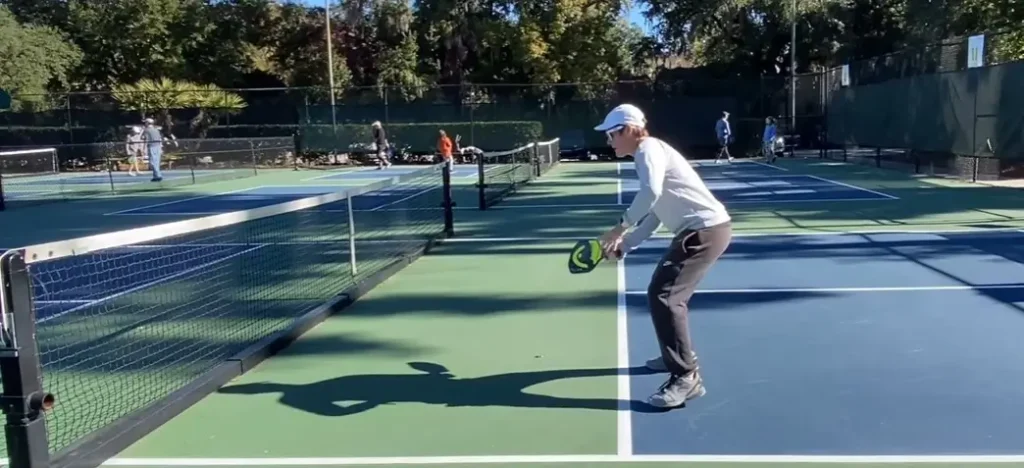Have you ever heard about the ATP shot in pickleball? If not, or if you want to explore it a bit more, this article is precisely for you.
Here we will help you know what an ATP shot is and how you can do it well by following our most straightforward guide. So, what are you waiting for? Just go ahead and know every crucial detail of the ATP shot in pickleball.
What Does ATP Mean in Pickleball?
Hey! don’t worry if you don’t know the ATP shot in pickleball because we have your back.
ATP is not any science rocket to understand. It stands for ‘Around the Post.’
So basically, the ATP term means the shot you make around the net posts or under the upper side of the pickleball net. That is it!
Now that you are familiar with the Around the post shot in pickleball, let us go through a quick & most accessible way to make it. But before going directly into the methods, first, you should know what crucial setup is required for the ATP.

How Do You Get Ready Before Smashing ATP?
As per my experience, there are several things you must follow to make ATP successful. But among the important factors, two things are crucial to preparing for the ATP.
These two things include your ready position and your patience level.
1. Ready Position
It would be best to focus on your standing position to hit a successful ATP shot.
Yes!
By this position, I mean that you need to stand straight with a balanced distance between your feet (make sure that your feet’s length is more significant than your shoulders) and your knees bent down. In short, be in your suitable ready condition.

Next, as you see the ball approaching your side, you should run consciously towards it to make your ATP as successful as possible. But while running, you also need to crossover.
I know it is not liked in pickleball because, in pickleball, you should act according to a quick response. But for the ATP, you have to cross over when running.
So, as you see the ball arriving, you should run towards it, cross over and bend down a bit to hit it successfully. It would be best if you bent down here because the ball tends to go lower after balancing its position.
Consequently, that was how you needed to be in your correct position for the ATP. However, sometimes you can skip the above methodology. You only need to head over to the ball and hit it at that time.
For more in depth guide, you can read our article on Pickleball Ready position.
2. Don’t Rush
Now comes the time to know the second most crucial step for hitting a successful ATP.
You might be confused with this second thing because you have to be active at every step of this play. Then why should you not rush?
Okay!
So, the ATP requires some of your patience. For instance, your opponent hit a cross-court dink, and the ball touched the baseline after crossing the net. Then it started to bounce out.
If you rush at this point, you probably miss the chance of hitting an adequate ATP. That is why you are advised to wait a bit in such conditions and allow the ball to make room for a good angle. In this way, you can hit the ATP better in this direction.
Since you have understood both essential factors to fulfill before hitting the ATP, now you should know a quick way to make the ATP.
The Easiest Way to Make the Pickleball ATP Shot Successful
Till this point, you have both the essential keys you need to start hitting the ATP. Therefore, you need to bring these two points into use for doing ATP.
Get ready in an appropriate position and examine where the shot can arrive. Then wait a bit to get a better angle to hit. Now you are all done doing the successful ATP Shot.
Final Thoughts on Pickleball ATP Shot
Let us wind up the pickleball ATP shot guide. You must have a good ready position and patience to do a successful ATP in pickleball. But you should remember that your knowledge is all in vain if you don’t practice. That’s why you should do some daily practical practices of the above guidelines, and then you will see fruitful results.

I am Michael Wanner, an experienced and educated expert in the field of pickleball. I hold a degree in Sports Science from Cleveland State University, Ohio, USA. My expertise lies in the technical aspects of pickleball and how to play it effectively. I have spent many years playing and coaching pickleball and have a wealth of knowledge to share with my readers. I am a valuable resource for anyone looking to improve their pickleball skills and strategies.